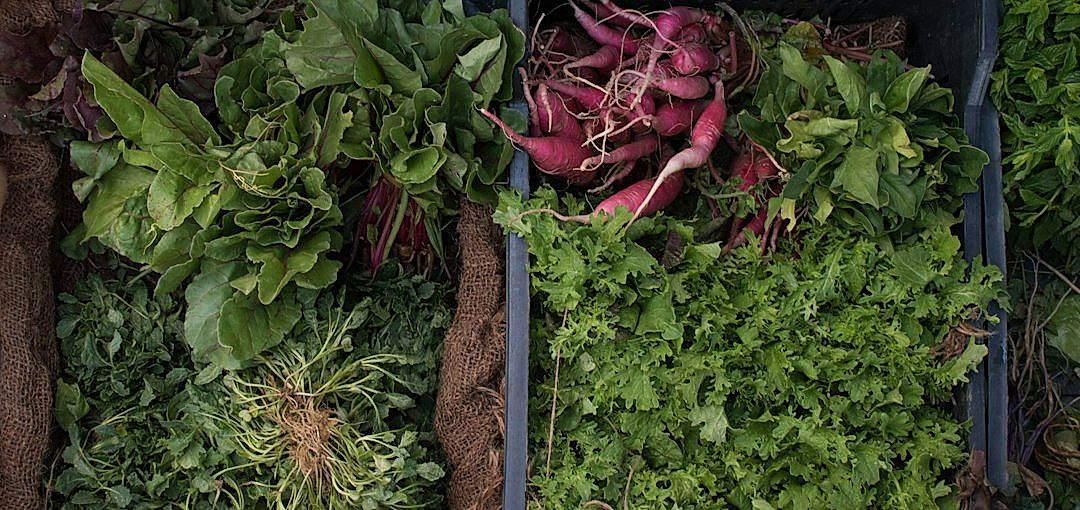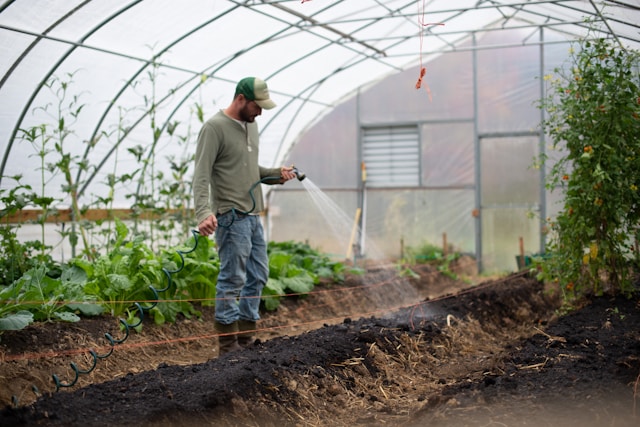Water scarcity is becoming a critical global issue, with vast implications for many sectors.
Among these, the effect on agriculture is particularly compelling due to the industry’s heavy dependence on water resources.
Enhanced by climate change and population growth, scarcity threatens to disrupt food production on a global scale.
Especially in regions with arid lands, the struggle to provide sufficient water for crops is a significant challenge.
It is apparent that the detrimental impact this could have on international food security is considerable.
Accordingly, exploring the implications of water scarcity on crop farming is both timely and pertinent.
Contents
Water Scarcity Effects On Crop Farming
1. Reduced Yield and Crop Quality
The issue of water scarcity has been linked closely to the significant reduction in both the yield and quality of crops across the globe.
With little water available for crop cultivation, farmers are often pushed to decimate their crops, leading to failed harvest and poor quality yield.
Water, being a crucial element in agriculture, aids in the transportation of essential nutrients to the plant. Thus, it affects the health and growth rate of crops.
Further, it has been observed that drought stress often results in the production of crops with lower nutritional goodness, affecting the overall quality of the yield.
Water scarcity has been known to affect the sugar, protein, and other nutrient content of crops, thus reducing their overall nutritional value, which is critical for human consumption.
An inadequate supply of water can also lead to the inhibition of essential metabolic processes in plants, leading to a reduction in their quality and yield.
Plants under the stress of insufficient water supply are also less adaptive to climatic changes, reducing their capability of yielding ample quality produce.
It is crucial to understand that irregular watering or water stress can stimulate fast-ripening in several crops, reducing their quality and size.
Moreover, if these conditions persist, it can lead to a significant decrease in crop yield over the years, affecting the agricultural sector’s sustainability.
In addition, regions with scarce water often exhibit concentrated soil minerals and salts which over time, can alter the soil’s fertility, influencing the productivity of crops.
It is, therefore, crucial to manage the water supply in farming operations wisely, and water-saving practices should be encouraged to enhance the yield and quality of crops.
It’s worth noting that, in areas where water scarcity is an issue, there needs to be a shift towards the use of water-efficient farming techniques such as drip and sprinkler irrigation.
Furthermore, adopting farming methods like conservation agriculture, can lead to the production of high-quality crops while using minimal water resources.
New technologies and research are being explored to develop genetically modified plants that are able to grow with less water, however this is not a complete solution.
The problem of water scarcity is a complex one that will require various strategies and efforts from stakeholders at all levels in order to guarantee food security and the continued productivity of the agricultural sector.
2. Increased Pests and Diseases
One of the most alarming effects of water scarcity on crop farming is the increased prevalence of pests and diseases.
When plants don’t have enough water, they undergo stress, which leaves them more susceptible to damage.
This is not only because their defenses are weakened, but also because pests and diseases tend to thrive in conditions where their hosts are stressed and weakened.
Various types of pests, from insects to rodents and other wildlife, are attracted to fields of water-stressed crops that offer an easy source of food.
Moreover, these pests carry pathogens that can cause diseases, adding another layer of complication to the problem.
When the problem of pests and diseases escalates, it leads to significant losses in terms of crop yield and quality, threatening food security and the livelihoods of farmers.
Pests and diseases, once established, prove difficult to control, and their impact can be extensive, affecting not just the current crop but future harvests as well.
Controlling these pests and diseases become a bigger challenge due to water scarcity.
Most of the pest and disease control methods, such as the use of insecticides or fungicides, require water.
Therefore, water scarcity doesn’t only lead to more pests and diseases but also impedes the efforts to control them.
In addition, the cost of combating pests and diseases can be a significant burden for farmers, particularly smallholders, who may already be struggling with other effects of water scarcity.
Another concern is that these pests and diseases present a threat to biodiversity in farming areas.
Species that would normally control pest populations, like birds and beneficial insects, may be driven away or die off due to the reduced quality of their habitat.
Overall, the issue of increased pests and diseases caused by water scarcity presents a major hurdle to achieving food security and sustainable farming.
It would need to be addressed with the utmost priority to prevent its long-term implications on agriculture and biodiversity.
3. Limitation in Crop Variety Selection
Water scarcity is a prevalent issue that poses a significant limitation on crop variety selection.
Many farming regions worldwide are severely impacted by this predicament, hence limiting their choice of cultivable crops.
In regions where there is a lack of water, the farmers are compelled to plant those crops that need less water.
This scenario consequently forces the farmers to fall back on less diverse crops.
A limited variety of crops not only influences the economic potential of the farms, but it also jeopardizes food security on a global scale.
Moreover, concentrates on a smaller range of crops reduces the resilience of the agricultural system as a whole.
This happens because the susceptibility of selected crops to pests, diseases, and changes in market demand increases.
With a lack of water supply, crops that require a large amount of water, such as rice, cotton, or sugarcane, are usually avoided by farmers.
In turn, the lack of crop rotation may further reduce soil fertility, creating a snowball effect on subsequent planting seasons.
Reduced crop variety leads to a decrease in crop biodiversity.
Less biodiversity in any ecosystem, including agricultural lands, makes that system more prone to pests and diseases.
Furthermore, complete reliance on a single type of crop narrows the traditional knowledge and skills related to the cultivation of various crops.
Also, it could indirectly impact the local economy by eradicating secondary businesses that rely on these diverse crops.
Therefore, water scarcity puts a limitation on crop variety selection leading to far-reaching impacts on the economy, the environment, and even on cultural practices.
Proactive steps should be taken to conserve water, reuse wastewater, and investigate the potential of drought-resistant crops.
So, the solution to water scarcity and the limitation in crop variety selection is not just a concern for farmers or agricultural scientists but requires concerted global action.
4. Increased Crop Failure Rate
Water scarcity has a direct impact on the increased rate of crop failure.
Without sufficient water, crops aren’t able to get enough nutrients, which can lead to crop failure.
Plants need the right amount of water to photosynthesize, growth and reproduction process which creates the plant’s food, can’t occur efficiently when water isn’t available.
This lack of food can cause plants to be weak, making it less likely that they’ll survive and produce a successful harvest.
Lack of water causes stress in plants, increasing their vulnerability to pests, diseases, and poor weather conditions, leading to higher rates of crop failure.
Without adequate water, crops will struggle to survive, leading to an increased crop failure rate.
Drought and dry conditions can also lead to a decrease in soil quality, which can impact crop growth and therefore increase the rate of crop failure.
It’s also important to note that different crop types have different water needs, and some crops may fail faster than others in times of water scarcity.
For instance, crops like corn and cotton require a lot of water, so these are more likely to fail in times of drought than crops like barley or rye, which can survive with less water.
This doesn’t only lead to an increased rate of crop failure, but also limits crop variety, preventing farmers from diversifying their crops and potentially reducing their income.
Long-term water scarcity can even lead to desertification, making the land entirely unfit for farming and leading to higher rates of crop failure over time.
Importantly, crop failure does more than just impact farmers, it impacts the entire food supply chain.
If crops fail, there is less food available for consumption, leading to higher food prices and potential food shortages, especially for communities that rely on local farming.
Advancements in technology can help mitigate the effects of water scarcity on crop failure.
Irrigation techniques, for example, can help conserve water and ensure it reaches the plant roots efficiently, reducing crop failure rates.
Yet, these solutions require investment and aren’t always feasible for small-scale or resource-poor farmers, elevating the crop failure rate even more in these areas.
5. Hinderance in Plantation and Cultivation Cycles.
The unpredictable nature of water scarcity can create a severe hindrance in the regular cycles of plantation and cultivation.
This, in turn, leads to a significant disarray in the necessary rhythm and pattern of planting crops and their subsequent cultivation.
Regardless of how technologically advanced we may have become, the elemental nature of farming is such that it remains inextricably linked to natural weather patterns.
Unfortunately, the increasing water scarcity is disrupting these patterns profoundly, causing major interruptions to the usual cropping cycles.
A prime example of this is when planting seasons have to be delayed due to inadequate water levels.
Crops that are planted after their ideal time can face hardships, potentially reducing their overall yield and quality.
Conversely, in many instances, farmers may be forced to plant crops too early due to the fear of upcoming, prolonged periods of drought.
This fear is validated as they are very aware that their crops will not survive without an adequate water supply.
Unfortunately, planting crops too early can also lead to suboptimal growth and thereby a decreased yield.
Moreover, disruptions in the planting and cultivating cycles due to water scarcity can have a trickle-down effect on various facets of farming.
For instance, pest and disease cycles might get disrupted, leading to a surge in infestations that the crops, already stressed due to water shortage, might not be able to cope with.
Farmers, therefore, are often caught in a vicious cycle of coping with water scarcity and trying to maintain crop health and yield.
In this struggle, they have to make difficult decisions about their crop cultivation on a seasonal basis, often switching to crops that are less water-intensive but might also be less profitable.
Furthermore, the knock-on effect on the wider supply chain cannot be underestimated as the disruptions to farming, whether from delayed plantings or reduced harvests, will cause prices to increase for consumers.
In extreme cases, water scarcity can make farming in certain regions entirely unviable, leading to abandoned fields and lost livelihoods.
The hindrance in plantation and cultivation cycles due to water scarcity hence brings forth a domino effect, impacting not just the yield and profit of farmers, but also the national economy and food security of a country.
The Bottom Line
It is pivotal to understand the extensive range of implications that come with neglected agricultural practices.
From the significant reduction of crop yield and quality to the growth of pests and diseases, the consequences can be devastating upon the agricultural sector.
Constraints may also result in a limitation of crop variety selection, reducing diversity and thus the resilience to environmental change.
Furthermore, the resulting increased crop failure rate presents a clear threat to food security.
When coupled with disruptions in plantation and cultivation cycles, it becomes clear that more needs to be done to mitigate these outcomes in order to sustainably secure our food sources.
It is essential that we invest in strategies to address these issues, ensuring sustainable practices, the diversification of crops and effective management of pests and diseases.
Through doing so, we can secure our agricultural future.




